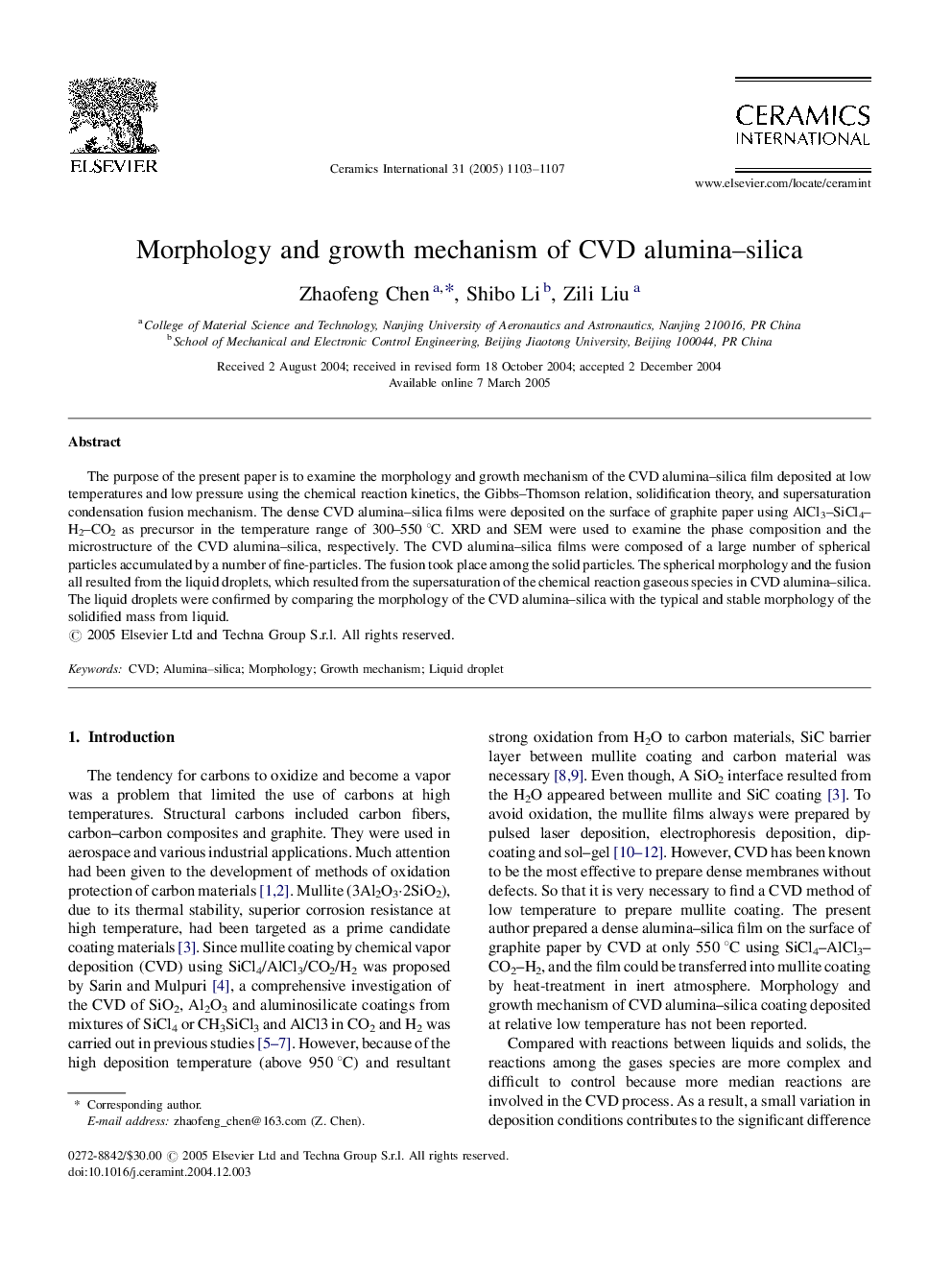| Article ID | Journal | Published Year | Pages | File Type |
|---|---|---|---|---|
| 10626480 | Ceramics International | 2005 | 5 Pages |
Abstract
The purpose of the present paper is to examine the morphology and growth mechanism of the CVD alumina-silica film deposited at low temperatures and low pressure using the chemical reaction kinetics, the Gibbs-Thomson relation, solidification theory, and supersaturation condensation fusion mechanism. The dense CVD alumina-silica films were deposited on the surface of graphite paper using AlCl3-SiCl4-H2-CO2 as precursor in the temperature range of 300-550 °C. XRD and SEM were used to examine the phase composition and the microstructure of the CVD alumina-silica, respectively. The CVD alumina-silica films were composed of a large number of spherical particles accumulated by a number of fine-particles. The fusion took place among the solid particles. The spherical morphology and the fusion all resulted from the liquid droplets, which resulted from the supersaturation of the chemical reaction gaseous species in CVD alumina-silica. The liquid droplets were confirmed by comparing the morphology of the CVD alumina-silica with the typical and stable morphology of the solidified mass from liquid.
Related Topics
Physical Sciences and Engineering
Materials Science
Ceramics and Composites
Authors
Zhaofeng Chen, Shibo Li, Zili Liu,
